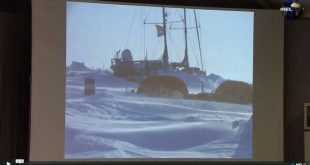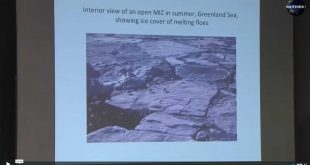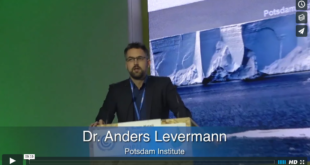The University of Earth, Urgent Action Series: COP 21 Paris 2015: Dr Susan Natali of Woods Hole Research Centre responds to questions about the impact of the higher global temperatures on Permafrost, the resultant melting, and bacterial activity will release additional Carbon Dioxide and Methane that has not been included in previous budgets
Judy Sole asks Dr. Natali: Once the methane issue starts a feedback loop, it’s not going to be very easy to stop the world collapsing in the way that you have described, but what Mrs. Ghandi suggested was to immediately cut the ruminant herds to about 10% of what they are today, that the drop in methane would at least give us chance to make up for a while, because the earth would cool once we start dropping the methane levels and prevent the feedback from continuing. Is there ay chance of that?
Dr. Natali’s response: “Other areas of emissions are not my area of expertise, but what it comes down to in permafrost, it doesn’t matter where the fossil fuels come from, whether it’s from agriculture or as a result of deforestation. Temperatures in the Arctic are increasing twice as fast as the rest of the planet, and it’s this temperature increase that drives permafrost thaw… The problem is that permafrost has now been added as a source of fossil fuel emissions that aren’t in the budgets that have been discussed here.” She discusses how microbes cause the thawing of permafrost. 30 to 70% of the permafrost will have thawed by 2100, as well as how it can’t be released through the fracking system.




